Does Rosacea Get Worse With Age? What the Research (and Your Skin) Might Be Telling You
📍 TL;DR – Quick Anwer:
Does rosacea get worse with age?
Yes and no. Rosacea often develops between the ages of 30 and 50, but it’s also common later in life.
In fact, 43% of patients say their symptoms began after age 50. 1 While some people see flare-ups calm with time, others notice symptoms becoming more frequent or intense as they age. Age-related volume loss in the skin (like declining collagen, elastin, and hyaluronic acid) can also make rosacea-prone skin thinner and more reactive. So if left unmanaged, inflammation, gut imbalances, and toxin buildup can overwhelm the body’s internal systems.2
A natural healing approach that supports overall health, especially gut, liver, and nervous system balance, can help prevent progression. Getting the right healthcare early on may ease symptoms at any age.
And yet, many delay treatment:
45% of patients sought help only after reaching middle-stage rosacea and 11% waited until advanced stages, when symptoms are often harder to manage.3
Age and Rosacea Flare-ups
You’re not alone, and you’re not doomed.
It’s a common (and discouraging) myth that rosacea inevitably worsens as you get older. But aging doesn’t guarantee progression. In fact, some people find their symptoms stay the same or even improve over time.
So why does it feel like it’s getting worse?
🧠 Here’s what might actually be happening:
- New rosacea triggers are showing up (like stress, hormones, or dietary shifts).
- Internal imbalances (gut, liver, hormones) are being overlooked.
- Conventional treatments manage symptoms, not the root cause.
📌 In this mini guide, we’ll explore:
- What the research says about rosacea and aging
- Common reasons flare-ups increase over time
- How to slow (or even reverse) your symptoms naturally
Let’s take a closer look at what’s really going on beneath the surface.
Why Does My Rosacea Seem to Get Worse With Age?
Rosacea doesn’t always worsen with age but it can feel like it does. This progression isn’t inevitable; it’s often the result of underlying imbalances that haven’t been addressed… yet.
Here’s why symptoms might intensify over time:
 1. Chronic Inflammation Builds Slowly
1. Chronic Inflammation Builds Slowly
When rosacea isn’t treated at the root, inflammation compounds quietly.
- Years of undetected gut dysbiosis or toxin buildup can worsen skin sensitivity.
- Hormonal shifts and stress can fuel this fire further as we age.
- Left untreated, rosacea can impact more than skin—57% of patients reported anxiety, and 31% faced depression.4
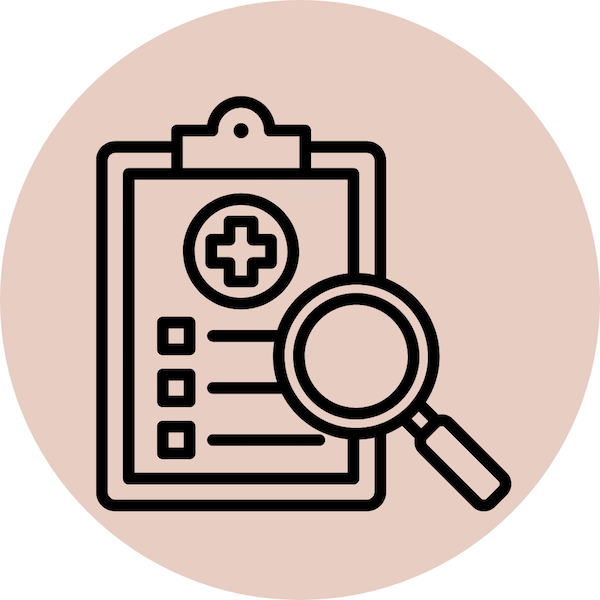 2. Delayed Diagnosis = Missed Prevention
2. Delayed Diagnosis = Missed Prevention
Many people go years without realizing they have rosacea, and 45% don’t seek medical help until it’s already progressed, making symptoms harder to manage. 5
- What starts as occasional skin flushing may evolve into papules, pustules, or persistent redness.
- Without guidance, they may unknowingly use irritating skincare, or eat trigger foods.
- Even in children, rosacea is often misdiagnosed as acne or eczema, delaying treatment and allowing inflammation to worsen at any age.6
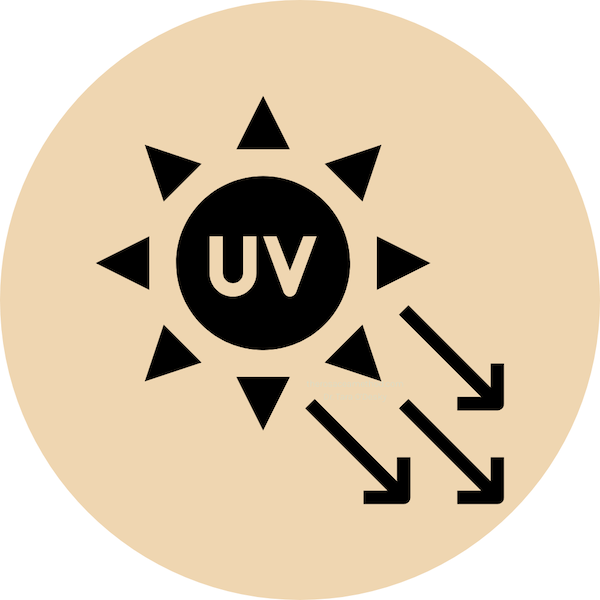 3. Mismanaged Triggers
3. Mismanaged Triggers
Over time, the skin’s ability to recover from flare-ups may weaken.
- Cumulative exposure to UV rays, alcohol, heat, or poor diet takes its toll.
- The longer triggers go unmanaged, the more sensitive the skin becomes.
Over time, the burden of rosacea compounds—patients in one study had 3× worse quality of life scores than those without the condition.7
🧠 Did You Know?
Rosacea can appear in kids as young as 4 years old. While symptoms may look different over time, the root causes (like gut imbalance, immune stress, and barrier dysfunction) are surprisingly similar.
As researchers now recognize, age alone doesn’t predict rosacea progression. Whether it starts at 4 or 54, the same internal imbalances are usually at play.8
📊 Mild Rosacea vs. Inflammatory Rosacea
Rosacea can shift over time from subtle redness to more reactive symptoms:
- Mild Rosacea → Occasional flushing, light redness, visible blood vessels
- Inflammatory Rosacea→ Papules, pustules, burning, stinging, skin thickening
If you notice worsening symptoms like pimples or stinging, this may be a sign your rosacea is shifting from mild to inflammatory.
Vascular Changes & Skin Aging
As we age, blood vessels become more reactive, and the skin barrier weakens, making flare-ups more frequent and longer-lasting. Rosacea often starts as transient redness, then may progress to visible blood vessels, acne-like bumps, or, in more severe cases, thickened skin or excess tissue around the nose (rhinophyma). This form, seen most often in men over 50, shows signs of deeper internal inflammation and long-standing imbalance.
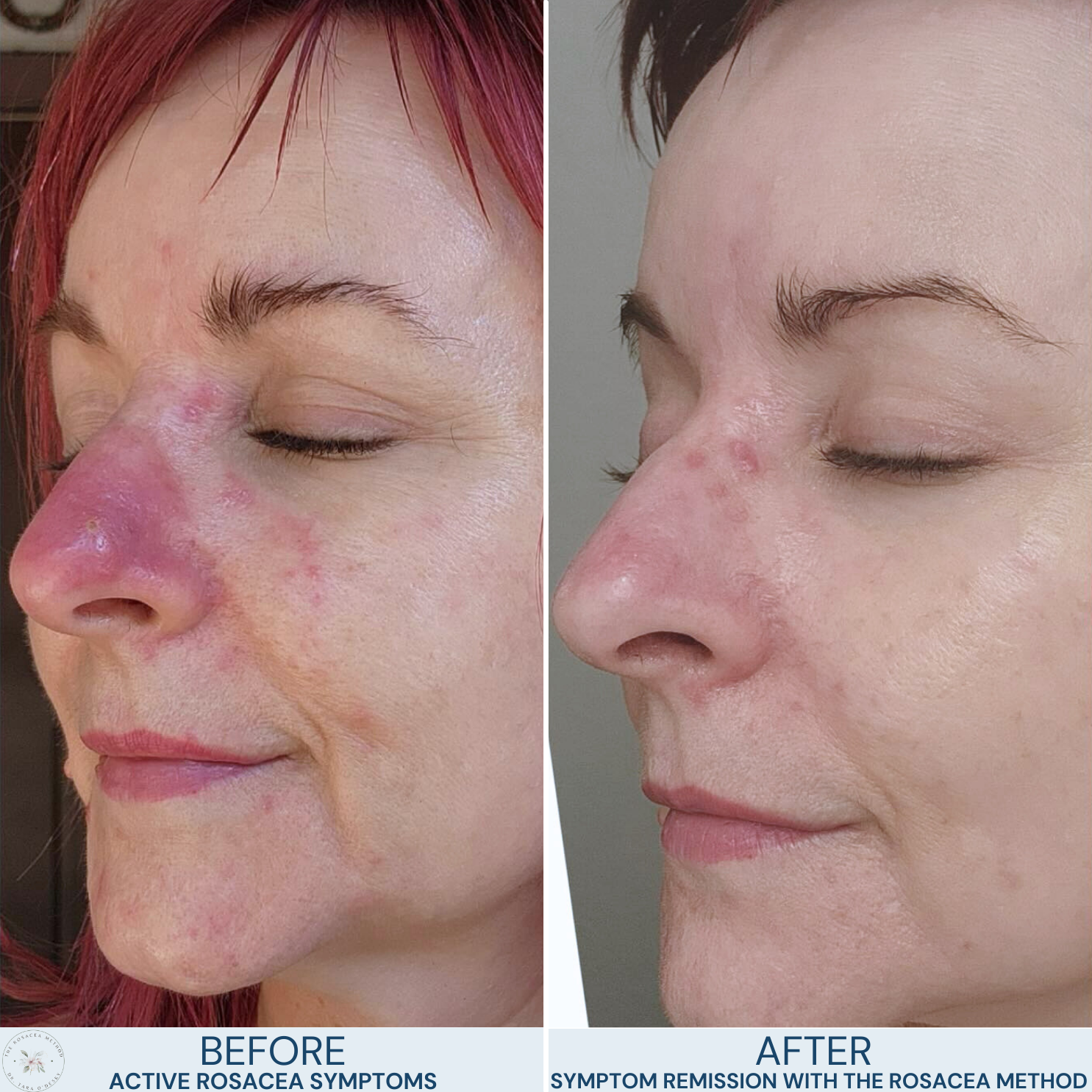
For other individuals, symptoms may show up in the eyes: dryness, irritation, or a gritty, “sand in the eye” sensation. Ocular rosacea signals that inflammation is affecting more than just the skin.
The good news?
With the right support, calming the immune response, nurturing gut health, and reinforcing the skin barrier, both facial and eye symptoms often begin to ease. Aging may increase sensitivity, but it’s also an opportunity to tune into your body’s deeper needs and begin healing from the inside out.
❓Did You Know?
As we lose volume with age (fat, collagen, and elastin), the skin becomes thinner and more reactive. This not only accelerates visible aging but also increases the risk of rosacea flare-ups. The graphic below breaks down how these structural changes impact rosacea-prone skin.
What Common Triggers Affect Rosacea as You Age?
Many people notice their rosacea worsens with age, especially in winter. That’s because the body’s ability to manage inflammation, detoxification, and hormones naturally shifts over time, often leading to heightened sensitivity and more frequent flare-ups.
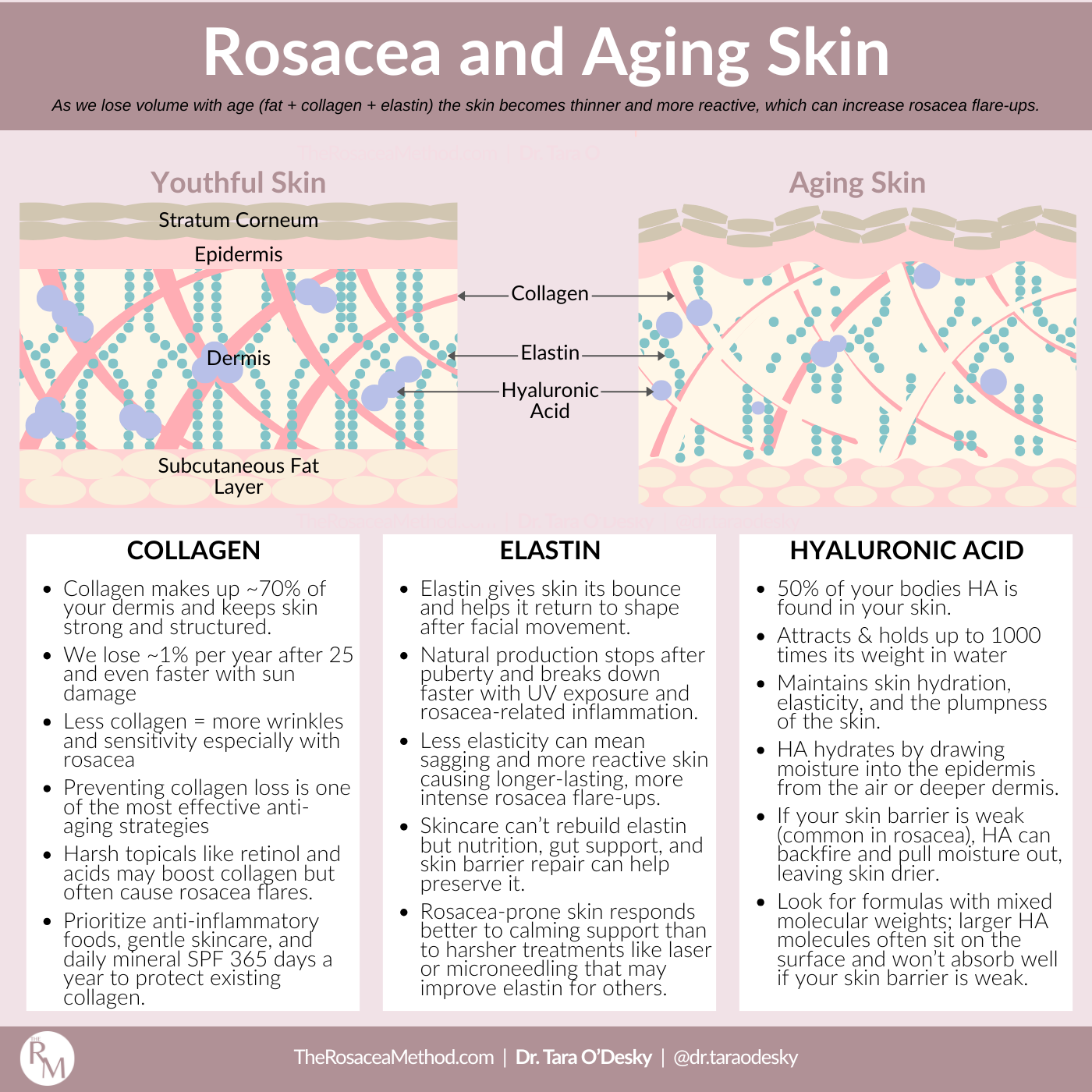
Here are some common triggers that often worsen with age:
- Cold, Dry Weather (Especially Winter) 🥶
Low humidity and cold wind strip the skin of moisture, weakening the barrier and increasing redness, flaking, and irritation. - Hormonal Shifts (Perimenopause & Menopause) 🔄
Estrogen decline affects skin thickness, hydration, and vascular tone, often triggering more frequent or severe rosacea flares. - Immune System Fatigue 🧬
Over time, chronic low-grade inflammation can wear down the immune system, making it harder to manage microbial imbalances, like Demodex mites or gut dysbiosis. - Worsening Gut Dysfunction 🦠
Conditions like leaky gut, SIBO, or poor digestion often become more pronounced in midlife, exacerbating rosacea from the inside out. - Increased Sensitivity to Products or Foods 🧴🍽️
The skin becomes more reactive, and long-standing tolerances may shift—common offenders include harsh cleansers, alcohol-based products, and high-histamine or inflammatory foods. - Sluggish Detox Pathways 🚫
The liver and lymphatic systems may slow down with age, making it more difficult to process internal toxins, which can contribute to skin congestion and vascular inflammation.
“Triggers evolve with age not because your skin is failing—but because your internal systems are asking for a deeper kind of healing” explains Dr. Tara O’Desky.
And one of the biggest shifts? Hormonal decline.
A 2024 study even found that the lower a woman’s estrogen levels, the more severe her rosacea symptoms became, especially persistent redness and bumps.9
These changes don’t mean rosacea is destined to worsen. When your body’s systems start working in sync again, through gut healing, hormonal balance, and skin barrier repair, rosacea often becomes much easier to manage, even in midlife.
How Does Menopause Impact Rosacea?
Yes, rosacea often flares during menopause, but not because you’re doing anything wrong. Hormonal shifts, especially the drop in estrogen and progesterone, can change how your skin responds to stress, heat, and inflammation.
Here’s what we know:
- Estrogen Drop Increases Blood Vessel Reactivity
Estrogen helps keep blood vessels calm and skin resilient. As levels fall, persistent redness (flushing) becomes more frequent, and visible capillaries often show up around the cheeks and nose. - Progesterone Drop Weakens Skin Barrier Repair
This hormone helps your skin retain moisture and repair itself. Without it, rosacea-prone skin can become even drier, more sensitive, and slower to heal. - Hot flashes mimic rosacea flare-ups
That rush of heat and redness? It can look and feel just like a flare. And when it happens often, frequent flushing may trigger ongoing inflammation beneath the surface. - Hormonal stress affects sleep, cortisol, and the gut
Many women notice sleep disturbances, anxiety, or digestive changes around menopause. These all raise inflammation and can worsen rosacea symptoms from the inside out.
Dr. Tara often reminds clients that menopausal rosacea isn’t just a skin issue, it’s a full-body signal. When you address your hormones, calm the gut, and repair the skin barrier, midlife can become a time of deep healing, not worsening.
Is It Possible to Prevent Rosacea Progression?
While rosacea is a chronic skin condition, its progression can often be slowed or even put into remission by addressing the root causes early. Many people are told their symptoms will worsen over time, but that doesn’t have to be the case.
Here’s what can help reduce the risk of progression:
- Restore gut health with anti-inflammatory foods, fermented vegetables, and gentle elimination diets to ease digestive strain.
- Calm systemic inflammation through herbal teas, antioxidant-rich meals, and stress-reducing rituals like meditation and mindful movement.
- Repair the skin barrier by avoiding harsh exfoliants and using minimal, non-irritating skincare that nourishes sensitive skin.
- Strengthen vascular resilience by limiting alcohol, managing sun exposure with hats or sunscreen, and incorporating circulation-strengthening practices like walking or cold rinses.
Consistency is key. Many people improve for a season, then relapse due to skipped habits or new triggers. That’s why ongoing lifestyle adjustments, not quick fixes, are the most sustainable path.
A guided natural healing program, like The Rosacea Method, can help you pinpoint triggers, restore balance, and stay on track with long-term support from a community that truly understands your journey.
What Age Does Rosacea Peak or Level Off?
Most people begin to notice rosacea symptoms in their 30s to 50s, often during a period of hormonal shifts, lifestyle stress, or digestive dysfunction. But the idea that rosacea inevitably worsens with age isn’t entirely accurate.
In fact:
- With proper care, many individuals experience stabilization or even long-term remission by their 50s or 60s.
- Skin can become less reactive over time, especially when inflammation, gut health, and immune balance are addressed.
- Aging doesn’t guarantee progression. For some, flare-ups become less frequent when they learn to manage triggers, improve detox pathways, and adopt supportive skincare habits.
The takeaway: Rosacea doesn’t have to get worse as you age. The earlier you start addressing root causes, the more likely you are to experience fewer flare-ups and a more resilient complexion over time.
So Then, Why Is My Rosacea Suddenly So Bad?
Sudden rosacea flare-ups are often the result of cumulative triggers that overwhelm the body’s tolerance, especially when gut health, immunity, or emotional stress are compromised.
Common culprits include:
- Stressful life events or sleep disruption
- Hormonal shifts, especially around perimenopause or menopause
- Dietary changes or exposure to inflammatory foods
- Immune system fatigue or post-illness inflammation
- Environmental changes like dry winter air or increased sun exposure
Even if you’ve had mild rosacea for years, your body may reach a “tipping point” where inflammation spills over. For nearly 26% of patients, early rosacea symptoms progressed to more severe forms within just a few months, suggesting that trigger buildup and inflammation can accelerate quickly if left unaddressed. 10
Without treatment, progression timelines vary:
- 26% progressed to middle-stage rosacea within a few months
- 23% progressed within a year
- 46% progressed over several years
This is why root-cause healing rather than surface-level treatment is so important for preventing unpredictable flares over time.
Take Control of Rosacea as You Age. Without Guesswork!
Aging doesn’t mean your rosacea will keep getting worse.
In fact, with the right approach, balancing your gut, calming inflammation, and strengthening your skin barrier, many people see their symptoms stabilize or even improve over time.
And if you’re tired of guessing what’s triggering your flare-ups, you’re not alone.
There are natural healing programs designed to help you understand your unique patterns, so you can stop reacting and start taking charge.
Need a next step?
👉 Read: Natural Healing for Rosacea
FAQs – Does Rosacea Get Worse With Age?
-
How do you stop rosacea from progressing?
Addressing root causes like gut imbalance, inflammation, and stress—alongside gentle skincare and trigger avoidance—can help. A dermatologist familiar with inflammatory skin conditions may offer guidance to prevent long-term progression.
-
Does rosacea get progressively worse?
Rosacea can worsen over time if left unaddressed, but it doesn’t have to. Many sufferers find that supporting internal health—like gut and liver function—alongside gentle skincare helps keep symptoms stable or even improves them.
-
What causes rosacea?
While the exact cause isn’t fully understood, rosacea is linked to chronic inflammation, immune dysregulation, gut imbalances, vascular sensitivity, and environmental triggers. Some clinical patterns suggest that issues like digestive dysfunction or stress may play a central role. Many individuals manage symptoms by focusing on internal balance rather than just facial surface irritation.
-
Is rosacea a gut issue?
Rosacea is not solely a gut condition, but poor digestion and imbalances like leaky gut or SIBO can be a contributing factor. For many individuals, improving gut health leads to noticeable changes in skin-care response and a reduction in flare-ups
-
What organ does rosacea affect?
Rosacea is primarily a skin condition, but it’s closely linked to gut function—especially the tissue lining the digestive tract. Addressing gut imbalances can help reduce inflammation and improve the characteristic flushing and sensitivity seen in rosacea sufferers.
-
What autoimmune is linked to rosacea?
Rosacea isn’t classified as an autoimmune disease, but clinical studies show links to autoimmune conditions like celiac disease and thyroid disorders. These associations point to immune dysregulation as a contributing medical factor in chronic inflammation and flare-ups.
-
Can rosacea be a symptom of something else?
Yes—rosacea can resemble conditions like eczema, dandruff (seborrheic dermatitis), or even lupus. In some cases, it may reflect deeper issues like gut imbalance, hormonal shifts, or immune dysfunction, which is why many physicians recommend a full-body approach to identify the root cause.
-
How did I heal my rosacea naturally?
Many women find relief by focusing on internal healing—like repairing the gut, reducing inflammation, and simplifying their face care routine. Avoiding trigger foods, managing stress, and supporting liver detox pathways are also common strategies used to calm rosacea naturally over time.
-
How did I cure my rosacea with diet?
Diet changes can make a big difference—especially when they reduce inflammation and support gut health. Many providers recommend eliminating common triggers like gluten, dairy, sugar, and alcohol, while focusing on nutrient-dense, anti-inflammatory foods. For some, reducing excess histamines or inflammatory oils can also calm symptoms.
-
What helps calm down rosacea?
Calming rosacea often starts with a gentle skincare routine and a low-inflammatory lifestyle. Soothing ingredients like aloe vera, green tea, and niacinamide can reduce redness, while stress management, gut support, and avoiding common allergy or food triggers can help prevent flare-ups from within.
-
What is the number one trigger for rosacea?
There’s no single trigger for everyone, but sun exposure is the most commonly reported. Other top triggers include stress, spicy foods, alcohol, and heat—especially when underlying inflammation or gut issues are present. Identifying your personal patterns is key to long-term flare-up control.
-
Why does everyone suddenly have rosacea?
Rosacea may feel more common today due to better awareness, earlier diagnosis, and rising rates of chronic inflammation, gut dysfunction, and environmental stressors—all of which can trigger or worsen symptoms. Increased screen time, processed foods, and hormonal shifts may also play a role.
-
What kills rosacea bacteria?
While topical antibiotics or laser therapy may reduce microbes temporarily, lasting relief often comes from calming inflammation, restoring gut balance, and supporting the skin barrier to help regulate bacterial overgrowth like Demodex mites.
-
Does rosacea get worse in winter?
Yes, many people experience more intense flare-ups in winter due to cold air, low humidity, and indoor heating—all of which dry out the skin barrier and trigger inflammation. Using an SPF even on cloudy days and choosing a gentle wash can help reduce sensitivity and prevent worsening symptoms.
-
Does rosacea get worse with menopause?
Yes, hormonal changes during menopause—especially declining estrogen—can heighten flushing, vascular sensitivity, and skin inflammation. Some perimenopausal women also experience increased flare-ups around the nose and eye area due to weakened barriers and immune shifts.
-
How long does a rosacea flare-up last?
A rosacea flare-up can last from a few hours to several days, depending on the person and trigger exposure. Recovery time often improves with consistent skin care and guidance from a board-certified doctor who understands inflammatory conditions.
References:
- National Rosacea Society. Patients Over 50 Hardest Hit With Rosacea Symptoms. Rosacea Review. Fall 2000. ↩︎
- Yesilirmak N, Bukan N, Kurt B, et al. Evaluation of ocular and systemic oxidative stress markers in ocular rosacea patients. Invest Ophthalmol Vis Sci. 2023;64(13):22. ↩︎
- National Rosacea Society. Patients Over 50 Hardest Hit With Rosacea Symptoms. Rosacea Review. Fall 2000. ↩︎
- Seetan K, Gablan M, Alnaimi M, Alhazaimeh D, Younes MB, Alnaimi A, Qablan A. Assessment of Depressive and Anxiety Symptoms and Health-Related Quality of Life in Rosacea Patients: A Case-Control Study. Dermatol Res Pract. 2024 Dec 7;2024:5532532. doi: 10.1155/drp/5532532. PMID: 39720781; PMCID: PMC11668539. ↩︎
- National Rosacea Society. Patients Over 50 Hardest Hit With Rosacea Symptoms. Rosacea Review. Fall 2000 ↩︎
- Korsing S, Stieler K, Pleyer U, Blume-Peytavi U, Vogt A. Rosacea in childhood and adolescence: A review. J Dtsch Dermatol Ges. 2025 Mar 22. doi: 10.1111/ddg.15693. Epub ahead of print. PMID: 40119745. ↩︎
- Seetan K, Gablan M, Alnaimi M, Alhazaimeh D, Younes MB, Alnaimi A, Qablan A. Assessment of Depressive and Anxiety Symptoms and Health-Related Quality of Life in Rosacea Patients: A Case-Control Study. Dermatol Res Pract. 2024 Dec 7;2024:5532532. doi: 10.1155/drp/5532532. PMID: 39720781; PMCID: PMC11668539. ↩︎
- Korsing S, Stieler K, Pleyer U, Blume-Peytavi U, Vogt A. Rosacea in childhood and adolescence: A review. J Dtsch Dermatol Ges. 2025 Mar 22. doi: 10.1111/ddg.15693. Epub ahead of print. PMID: 40119745. ↩︎
- Yang F, Wang L, Jiang X. Clinical characteristics of rosacea in perimenopausal women. Skin Res Technol. 2024 Jan;30(1):e13542. doi: 10.1111/srt.13542. PMID: 38221784; PMCID: PMC10788583. ↩︎
- National Rosacea Society. Patients Over 50 Hardest Hit With Rosacea Symptoms. Rosacea Review. Fall 2000 ↩︎
MEDICAL DISCLAIMER:
This content is for informational and educational purposes only. It is not intended to provide medical advice or to take the place of such advice or treatment from a personal physician. All readers/viewers of this content are advised to consult their doctors or qualified health professionals regarding specific health questions. Neither Dr. Tara O’Desky nor the publisher of this content takes responsibility for possible health consequences of any person or persons reading or following the information in this educational content. All viewers of this content, especially those taking prescription or over-the-counter medications, should consult their physicians before beginning any nutrition, supplement or lifestyle program.
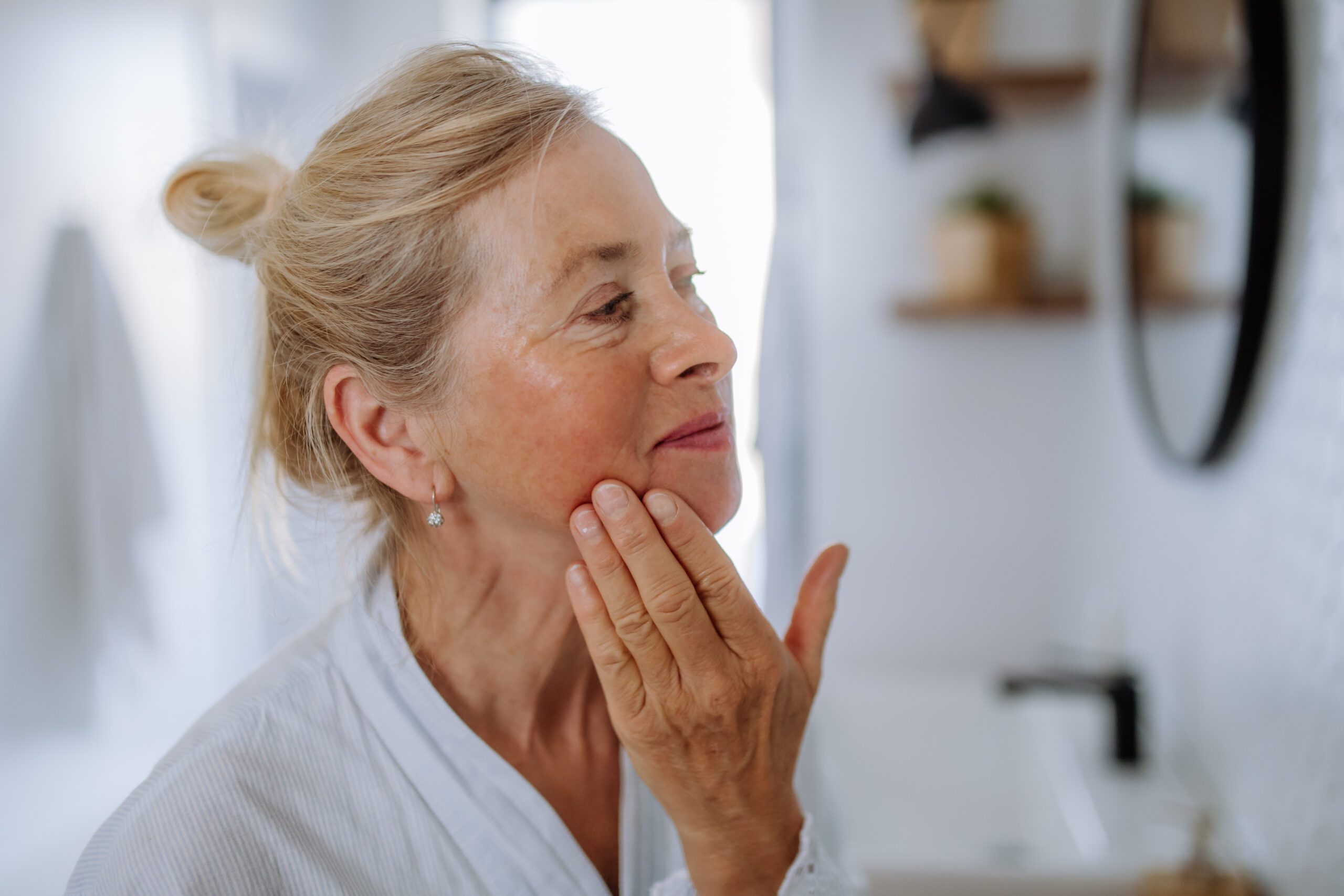
Leave a Reply
Learn More About Me
20 years of rosacea
- rosacea
- chronic skin issues
- gut issues
- food sensitivities
- inflammatory conditions
After 20 years of ineffective treatments and medications, Dr. O'Desky reversed her rosacea 100% through dietary changes and food-based medicine.
Health Coach & Holistic Skin Expert
Meet
Dr. Tara O'Desky
Since developing her own holistic healing program,
The Rosacea Method, she has helped countless patients of all ages with:
- rosacea
- chronic skin issues
- gut health
- food sensitivities
- inflammatory conditions
Dr. O'Desky continues to see patients in private practice in the USA and also sees clients via Telehealth. She currently offers various programs and workshops for people all over the world dealing with chronic health issues, poor gut health, and rosacea.
Health Coach and Holistic Skin Expert
Meet Dr. Tara O'Desky
-L. M.
"I want to say thank you so much for the program!
I never feel hungry anymore. My diet has opened up a ton and I feel really healthy and excited learning that there’s so many things I can eat now that are healthy and tasty. I felt good through the entire cleanse and my skin has definitely improved."
-Anonymous
"I felt so hopeless and I could not see light at the end of the tunnel. Now I have hope again and I feel more positive about my situation overall! Yes it can definitely heal, I have so so sure others heal! This program is great, I feel like It covers everything! Thank you! "
-Darlene B
"For the first time in 6 years, I feel like I have been given a clear direction to go in that will actually heal my skin. There's so much guess work that comes along with skin complications and Tara helps to clear all that up.Recommend 1000%."
I know that I need to focus on internal healing and I don’t know where to start for sustainability! This is helpful
I’m so glad you’ve found it helpful!
Hi. I’m a rosacea sufferer. I really want to get rid of it . I tried so many different things but it’s not helping. Please help me!
Yes! I have tons of info available here on all the different blog posts, my IG account, free guides and so much more. Best of luck!
Pick me please! I’ve been wanting to start your program and just haven’t been able to💖
I always feel so much better after reading your invaluable information. I would love to be chosen to start your program. I feel it is my time to shine. xo
Thank you Teri! There’s so much you can do to get started today! And I do hope you win the raffle!
Very interesting reading, lots of information that helped me
I”m so glad you found it helpful!
This blog is very interesting and helpful
I’m glad I found you.
I’m so glad its been helpful to you!